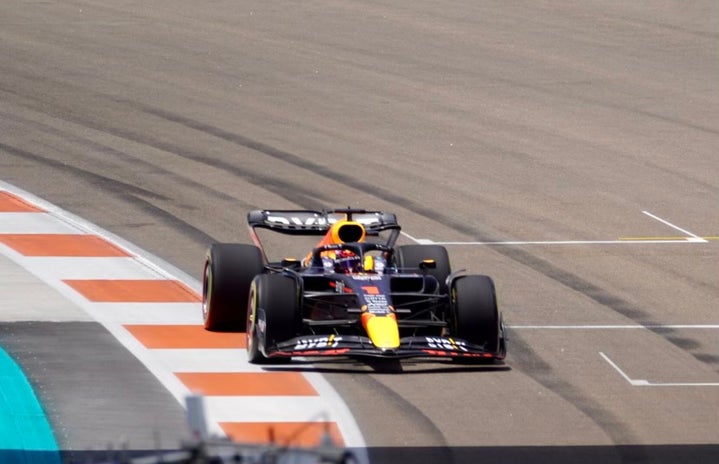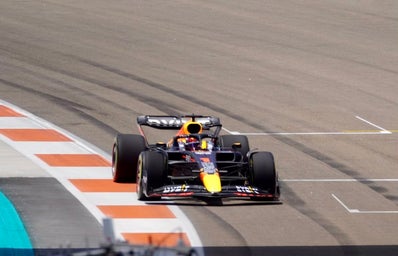Formula One is the highest class of international racing for single-seater formula-racing cars, sanctioned by the Fédération Internationale de l’Automobile also known as FIA. It was inaugurated in 1950 in Silverstone, United Kingdom as the World Drivers’ Championship, and only later in 1981 it gained the name of FIA Formula One World Driver Championship.
If you are new to this sport, you might know his American cousins, NASCAR and IndyCar. The former is the most different, as it has a closed cockpit (where the pilot sits) and oval tracks. IndyCar and F1 are more similar: they both share the spaghetti-looking track, as well as open cockpits. However there is one big difference between these two, and basically the reason why F1 is such a big deal. In IndyCar, all the cars use the same frame, or as they call it “chassis,” meaning the whole competition is based on how the driver races the car. In F1, on the other hand, every team must design as well as manufacture their own cars. They also have the opportunity to improve their vehicles while the season is in play. Therefore, the competition in F1 is much more complex, as it is centered not only on how the actual driving but also on how the team builds and rebuilds these cars.
For this sport, there are 10 teams, with each one racing two cars. Check out the upcoming 2023 season the grid to familiarize yourself with some of the most famous names:
Oracle Red Bull Racing: Max Verstappen and Sergio Perez
Scuderia Ferrari: Charles Leclerc and Carlos Sainz
Mercedes AMG Petronas: Lewis Hamilton and George Russell
Alpine Renault: Esteban Ocon and Pierre Gasly
McLaren Racing: Lando Norris and Oscar Piastri
Alfa Romeo Racing: Valtteri Bottas and Zhou Guanyu
Aston Martin Aramco Cognizant: Fernando Alonso and Lance Stroll
Haas: Nico Hulkenberg and Kevin Magnussen
Scuderia Alpha Tauri: Nyck de Vries and Yuki Tsunoda
Williams Racing: Alexander Albon and Logan Sargeant
Three rookies will de debuting this season, which will definitely make for an exciting watch.
Each race is called a Grand Prix, an event that lasts three days. On the first day (Friday), the drivers practice, testing their cars on the track and making small adjustments as they are needed. Saturday entails not only more practice time, but also qualifying, which is divided into three parts: Q1, Q2, and Q3. This outcome of this event dictates the order of the race on Sunday.
During Q1, drivers have 18 minutes to go out on the track and run qualifying laps to proceed to Q2. The five slowest drivers from this round do not advance to Q2, where the remaining 15 cars have less time (15 minutes) to proceed to Q3. After Q2, another five drivers are eliminated from the competition. In the third round of competition, the 10 remaining cars have 12 minutes to attempt to set the fastest time to ensure they start off Sunday’s race in the best possible position. The 10 disqualified cars, however, will not be returning home so soon: they still race on Sunday, but occupy lower positions on the grid to begin, placing them at a significant disadvantage.
After two intense days of preparation and anticipation, the race takes place on Sunday. Drivers warm-up with what is known as a formation lap. Each car then takes their place in the position they earned during qualifying the previous day and do another formation lap, which gives them a chance to check the track and car conditions, allows for the tires to warm up, and lets the pit crew clear themselves and their equipment.
The cars then form on the grid. A medical car gets behind the final car, and when the lights turn off, it’s showtime!
However, this format is not followed across all races. For instance, when the Grand Prix is chosen to have a sprint qualifying, the division of the three days is a little different. There’s still practices and a qualifying but instead of defining the grid for next day’s race, the latter sets the grid for the sprint. In it, racers drive 17 laps and are awarded point based on their final position.
As you may have guessed, this sport is greatly defined by points. After a race the first ten cars are awarded points:
First place: 25 points
Second place: 18 points
Third place: 15 points
Fourth place: 12 points
Fifth place: 10 points
Sixth place: 8 points
Seventh place: 6 points
Eight place: 4 points
Ninth place: 2 points
Tenth place: 1 point
Drivers want to win the most points so that they can win the Drivers’ Championship. The driver with the most points at the end of the season is the winner. Teams, on the other hand, want to score as many possible points to win the Constructors Championship. A small difference in the final ranking can mean a million-dollar difference.
Here you can check out the calendar of this new upcoming season!
So why should you care about a bunch of cars driving fast? These are the fastest cars in the world, built by the biggest constructors of the world. You get to see not only how good the drivers are but how good the teams are in building these cars, working as a team, and managing millions of dollars. You are guaranteed to see passion, rivalry, and intensity every Grand Prix. If you are interested in seeing all of this from the side of the driver, check out the series Drive to Survive on Netflix, where you can go back to five years ago and meet all the drivers and learn their stories. You also won’t want to miss the start of the new season on March 5th in Bahrain.


